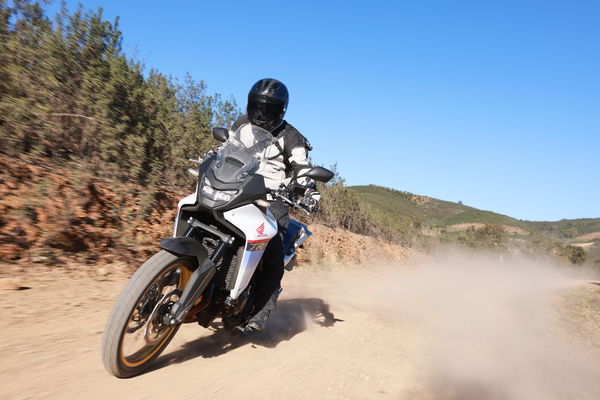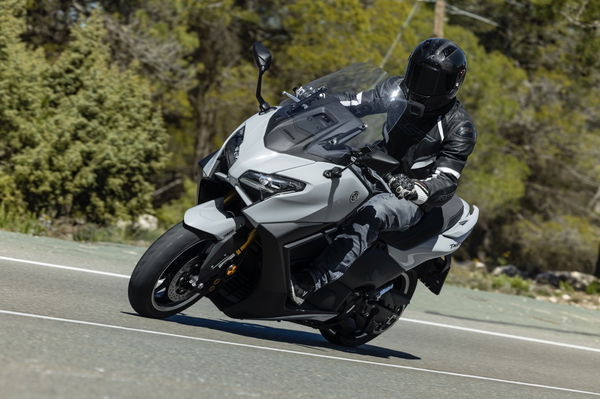Ducati Multistrada V2 S (2025) Review: New V2 New Character
The launch of the new Multistrada V2 S gives us our first taste of the Borgo Panigale brand’s new 890cc V-twin
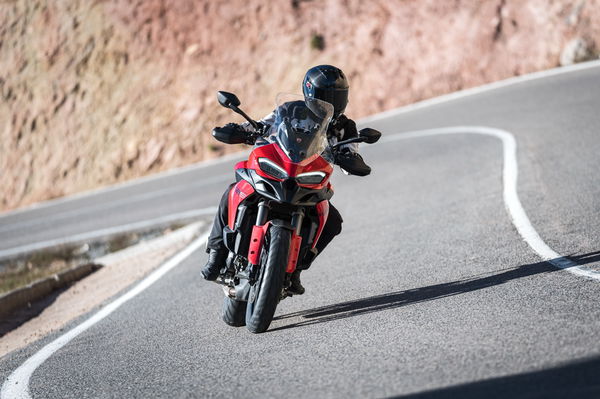
Ducati has revamped its entire middleweight range for 2025, with a new engine set to feature in the firm's V2 Streetfighter, Panigale and Multistrada models. The first of those models to get launched is the Multistrada, giving us our first taste of the all-new engine platform.
For this press launch we flew to Valencia, for a day of thrashing around the mountains. We covered over 120 miles on the bike, riding in torrential rain in the morning and then ending the day under clear blue skies.
Multistrada V2 price, colours and availability
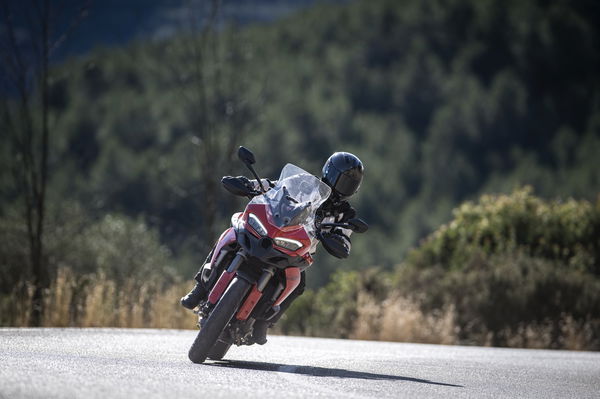
The new Multistrada V2 starts at £13,995 for the base model or the £16,390 S specification bike as ridden on the launch. The new bike is available in either traditional Ducati Red or a matt-finished Storm Green option.
Compared to the competition, the top-spec S model sits at the premium end of the mid-weight sports tourer segment, being more expensive than the Triumph Tiger GT Pro and a full £5,000 more than the newly announced Tiger Sport 800. It is, though, a more advanced proposition than both of those bikes, thanks to its more advanced rider assistance systems and semi-active suspension at both ends.
What’s new with the 2025 Multistrada V2
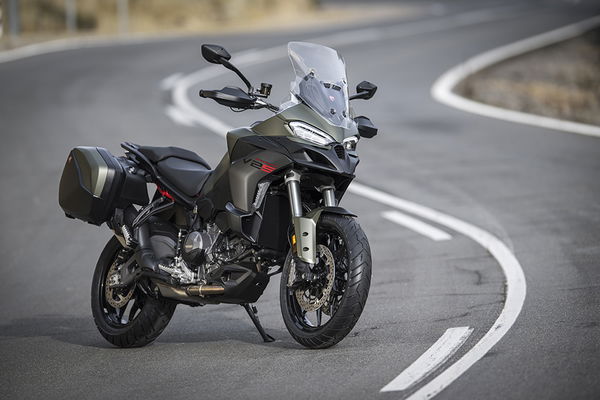
Everything, basically. From the bottom to the top, front to back, the 2025 Multistrada V2 is much more than simply a new engine. For starters, there is a new frame, with Ducati ditching the trellis for a lighter and more compact front frame design. The new design is part of the reason this bike tips the scales a claimed 18kg lighter than the outgoing model.
The engine is also helping to shed the pounds, with the new V2 boasting a claimed weight of just 54.9kg for the entire powerplant. And it’s the engine that is the big news for the bike, and as is the way with some other Ducati engines, the new 890 bucks the trend for Desmo’ valve gear in favour of more cost-effective chain-driven cams, finger followers and spring valves.
What hasn’t changed for 2025 is Ducati offering one of the most technologically advanced bikes in the middleweight segment, with only the Yamaha Tracer 9 GT+ (which has a host of radar-assisted features) offering more technology as standard. The suspension still comes from Showa with its Skyhook semi-active system, while the riding modes and assistance systems all boast high levels of adjustability. Joining the new frame and engine is a new swingarm which features a design similar to that found on the Multistrada V4.
What’s it like to ride
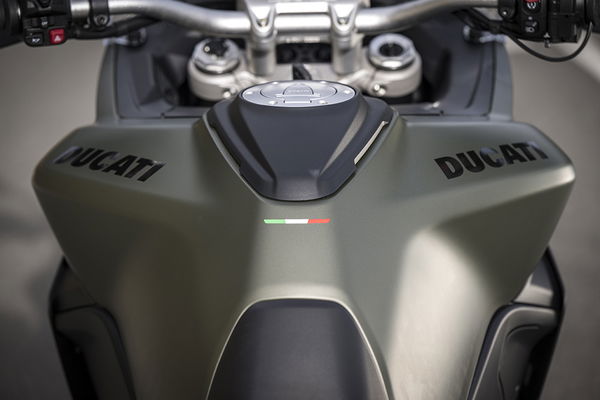
The reminder that this is an all-new bike hits you from the second get on the new V2, as instead of sitting in it (as was the case with the previous generation) the 2025 version places you on top of the bike. With less fuel tank beneath my chin, it feels extremely roomy up top, and as you’d expect there is plenty of legroom to play with.
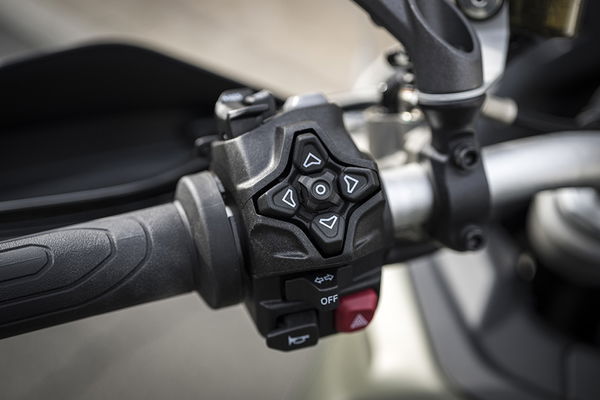
I’m a fan of the new switchgear, too, which features a five-way joystick on the left handlebar. Mated to the buttons is a new TFT dash which brings connectivity if you use a Bluetooth headset and allows for easy adjustment of the riding modes and other settings.
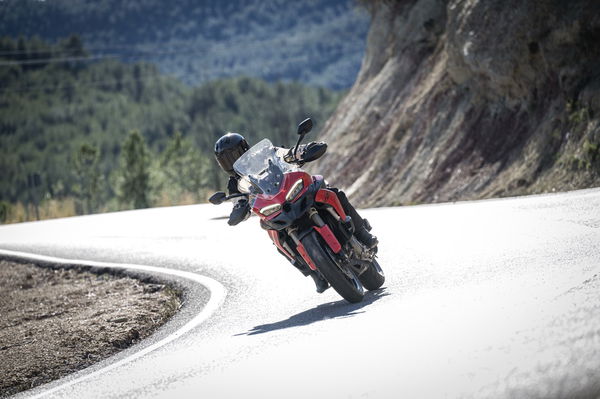
With the bike set in the standard ‘Road’ riding mode, we head off into the gloom of a chilly Spanish morning, but not before I’ve given a four-fingered heave on the clutch. It’s a chunky feeling lever on the now smaller capacity V2, and reminds me of the heavy lever that was a feature on the 1260S I rode on to World Ducati Week in 2017. With a quickshifter coming as standard, it’s not an issue once you are on the move, although if you spend a lot of time riding in town, it might be something to bear in mind.
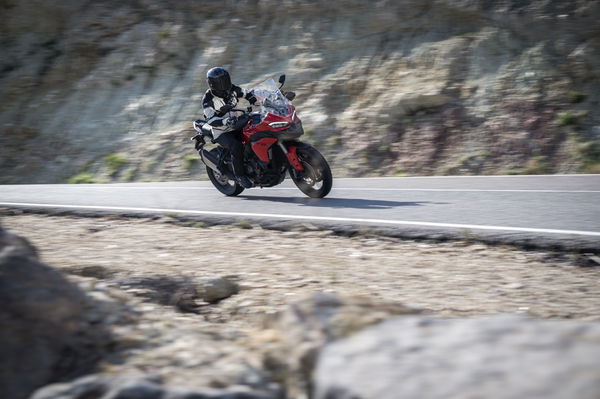
With the gloom quickly turning to drizzle and then rain, there isn’t much to learn about the bike other than how its Wet riding mode performs. The throttle is nicely progressive and despite the traction control being as high as it’ll go, it's surprisingly difficult to get the rear wheel to spin. Overall though, the wet weather handling is good, possibly not quite as confidence-inspiring as the Tiger Sport 800 I was riding last week, although that is a smaller bike in terms of weight and dimensions, which I think makes more of a difference than semi-active suspension does.
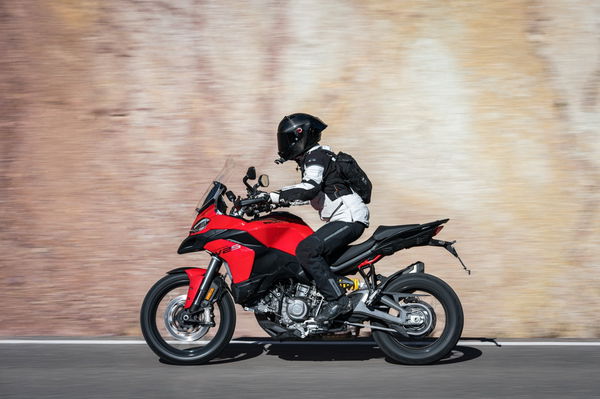
The slow mooch across the mountains highlights the suspension, which deals with any bumps and potholes extremely well. Like its bigger sibling, the Multistrada V4 S, its ability to sense the way the bike is being ridden and adapt the suspension to suit is virtually unmatched in the two-wheeled world. It’s also shining a light on the new bike's comfort, which is proving to be very good. The seat of the new bike is much less sculpted than the one found on the outgoing model. And while the more heavily contoured perch of the old bike helped to pull down the seat height and shorten the standover, it did mean there was a tendency to slide forward, ending up balls-to-tank. The new design is much flatter, meaning instead of the inevitable slide to the front, I can now sit where is most comfortable for me. As mentioned, the cockpit feels extremely roomy, although the adjustable screen (which is probably the best design on two wheels) is within easy reach of the wide handlebars.
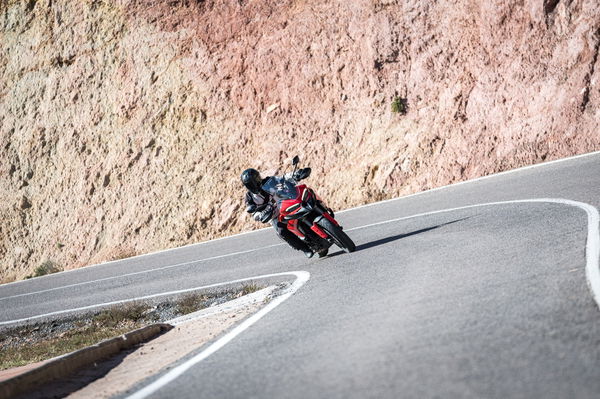
Thankfully the day isn’t a complete washout, and after a lunch stop in the hills, we head off into the afternoon bathed in some very welcome sunshine. Flicking the bike into its sportiest riding mode, now is the time to get to grips with it, and right from the off it's proving to be a very different beast to the V2 of old. The old 950 was a bit of a point-and-squirt machine, much like its former sibling, the 1260S. Corners were best negotiated by squaring off as much as possible and then driving out of the corner using the gutsy low and mid-range grunt. You don’t have to do that on the new bike, as it seems to relish corner speed and feels much more comfortable at lean than its predecessor ever did. It’s also much more flickable than the outgoing bike, feeling like the centre of gravity has been reduced while the reduction in weight is also helping significantly.
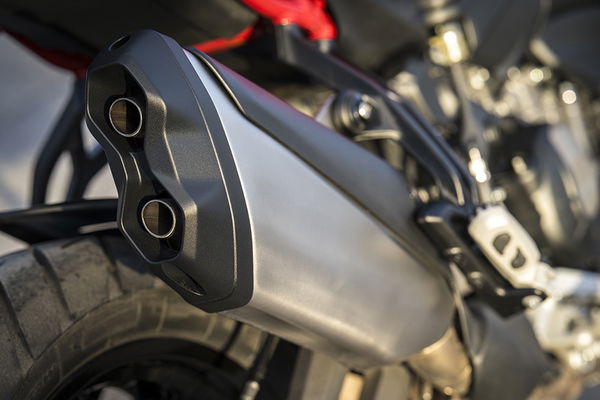
With such wide-reaching updates across the bike, it might be surprising to see mid-spec Brembo calipers taking care of the stopping. Having ridden the bike, though, I can see nothing wrong with them at all. They are about the same spec as was found on the old Multistrada 950 V2, and given that this new bike weighs significantly less now than it did before, they are more than up to the task. As with all other modern era Multis’, the ABS is as trick as it gets, and for the most part you can just forget it’s there and lean on the assistance right up to the corner apex even on sketchy and wet roads.
What is the new Ducati V2 engine like?
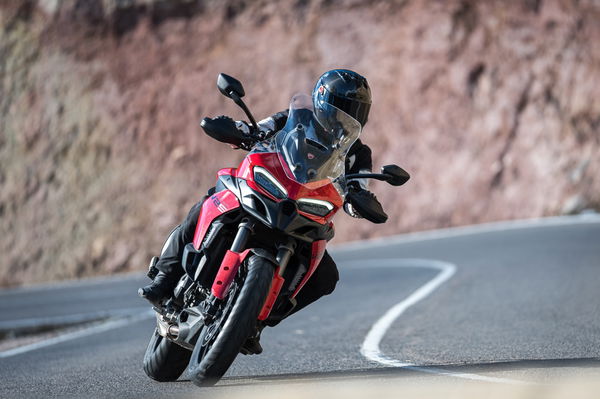
My overall impression of the new 890 V-twin from Ducati is that it feels a world away from the 937cc Testastretta 11° unit it is replacing. It’s got a more peaky delivery than before, with plenty of mid-range torque and top-end power on hand, but less of that juicy low-end grunt that made the Testastretta such a versatile engine. With 113bhp on tap, it’s plenty quick enough in the Multistrada V2, you just have to work the engine a little harder to get there.
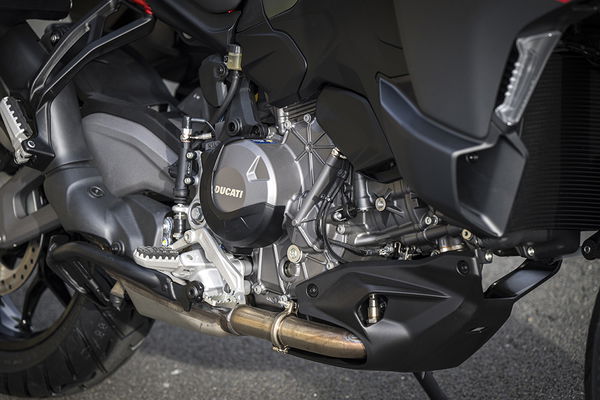
I said it in my piece to camera, that if today had been a blind taste test of the new bike, in that I was plonked on the bike with my eyes blindfolded, I’d not immediately know that it was a Ducati I was sitting on. And I’m sure I’d be able to correctly ID the previous V2 in the same scenario. It’s not that it’s any worse than the Testastretta engine, in fact, taking into account most of its performance stats like power, torque, and weight, it is much better. It just doesn’t feel like a Ducati V-twin has until now, and for the most part, you’d be forgiven for assuming that you were riding any one of the parallel-twin, 270-degree crank engines that have flooded the mid-weight segment.
Any bad bits
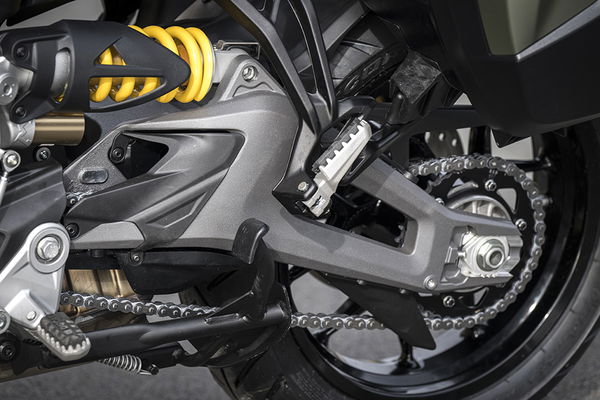
I had a bit of an issue with the quickshifter on my bike, in that it would stutter between first and second and second and third gears, not all the time but just occasionally enough to start to get annoying. The Ducati tech I spoke to put it down to a mis-calibration which would be fixed before bikes land in dealers. The rest of the gearshift is fine, feeling direct and accurate, and neutral is easy to find at a standstill.
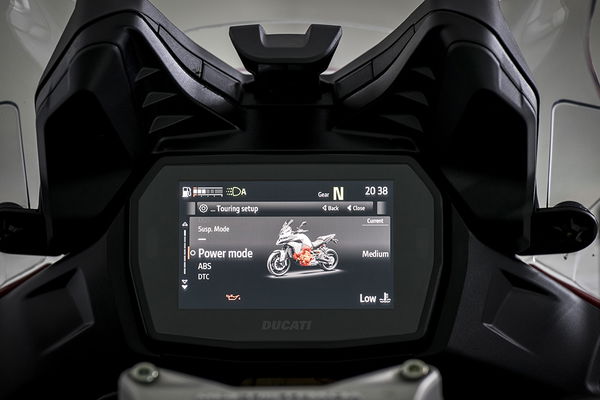
Another point of note is that the new TFT, which is otherwise very nice and easy to read, features indicator repeater icons on the dash, not actual LEDs mounted in the cockpit. Because of this, I found it all too easy to overlook the indicator and leave it on when had an actual light been in use I’m sure I’d have noticed it.
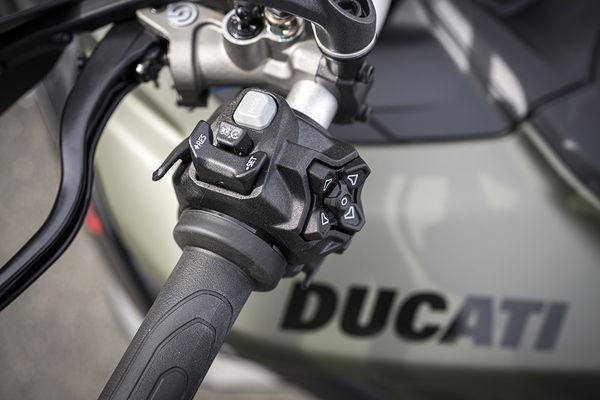
And the final niggle, which is a small one, is that on the whole, the new switchgear is great, although the cruise control is now mounted on top of the switchcube. That is making it a bit of a stretch for my dinky pinkies to find.
Should you buy the 2025 Ducati Multistrada V2?
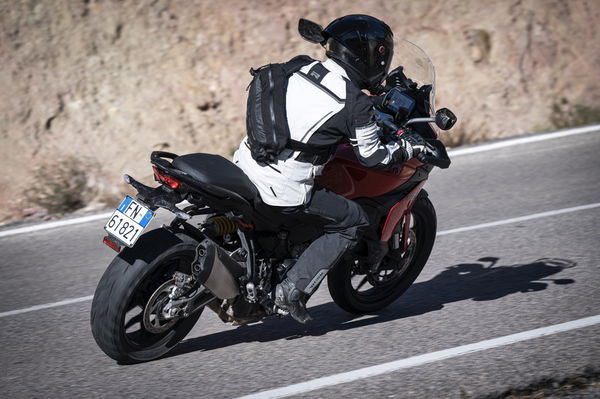
There is no getting around the fact that the mid-weight Multi’ was very much due for an upgrade. Sure it became the V2 in 2022, but that update was a minor tweak and re-brand on the previous 950 version, and that’s a bike that can trace its roots back to 2017. With that in mind, Ducati hasn’t just updated the bike in line with its business requirements, it seems like they have aligned the model more with the motorcycle landscape that we see today. V-twins in the mid-weight segment are something of a rarity, and the marauding 270-degree cranks continue to dominate the landscape. With the Ducati being a bit of an outlier thanks to its configuration, this latest generation feels much more like its competitors, in delivery, character and performance.
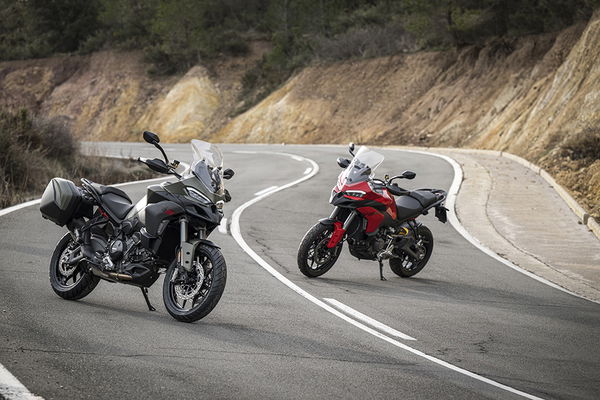
Overall the bike is a much more complete package than the machine it's replacing, being more comfortable, technologically advanced, and dynamically more entertaining than before. It has though lost some of the ‘je ne sais quoi’ the old bike exuded thanks to its Testastretta engine, although it is only those who experienced the previous bike that will miss that. For the rest of you, the Multistrada V2 should be looked at as one of the pinnacle models in the middleweight sports and adventure touring sector.
2025 Multistrada V2 spec
Engine | 90-degree V-twin, four-valve, liquid-cooled |
Bore/stroke | 96 x 61.5mm |
Power | 113bhp @ 10,750 rpm |
Torque | 67.9lb-ft @ 8,250rpm |
Frame | Cast aluminium monocoque |
Suspension (f) | Skyhook semi-active electronically adjusted (T-170mm) |
Suspension (r) | Semi-active electronically adjusted mono-shock (T-170mm) |
Brakes (f) | Brembo four-piston monoblock / 320mm disc |
Brake (r) | Brembo two-piston caliper / 265mm disc |
ABS | Cornering ABS IMU controlled |
Weight | 202kg wet (no fuel) |
Seat height | 830mm to 850mm adjustable |
Fuel capacity | 19 litres |
Find the latest motorcycle reviews on Visordown.com
